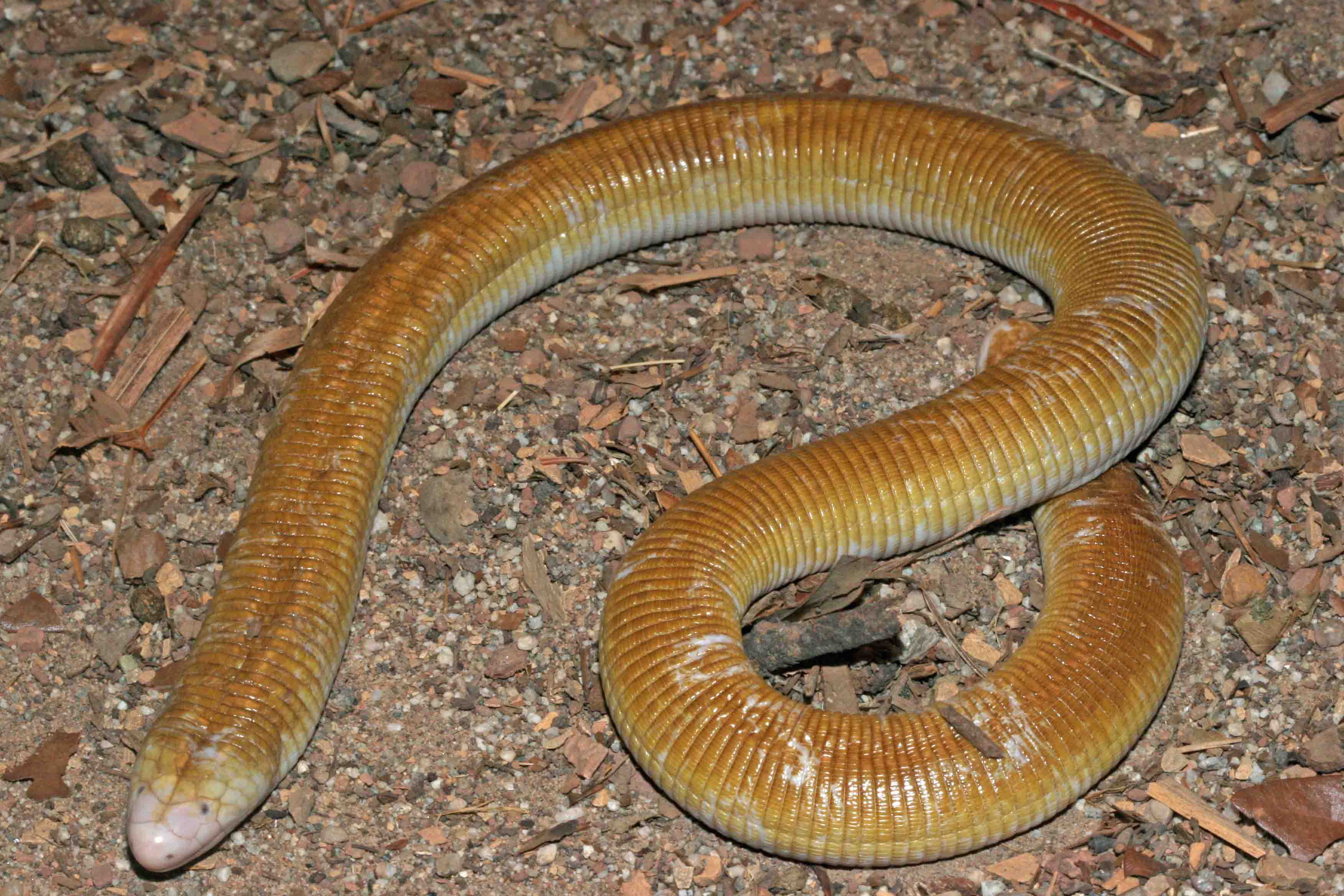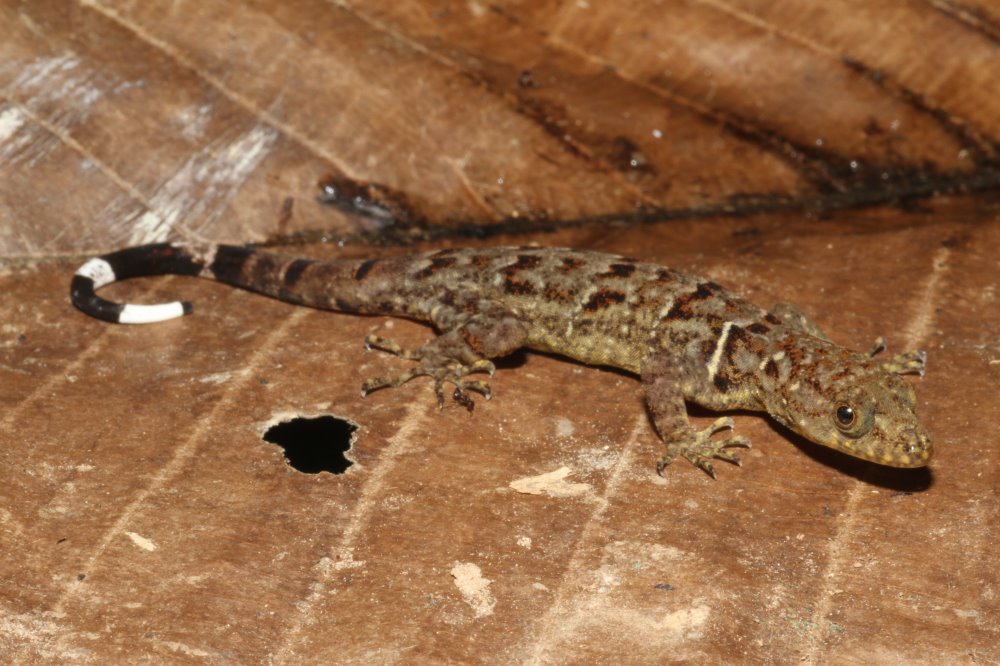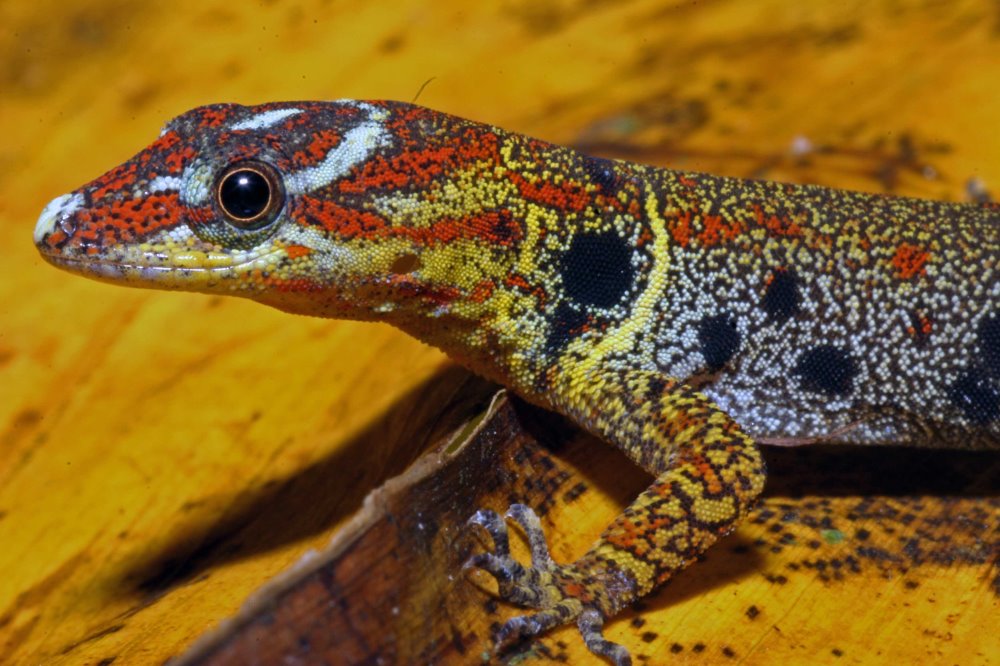Reptile & Amphibian
News Blog
Keep up with news and features of interest to the reptile and amphibian community on the kingsnake.com blog. We cover breaking stories from the mainstream and scientific media, user-submitted photos and videos, and feature articles and photos by Jeff Barringer, Richard Bartlett, and other herpetologists and herpetoculturists.
Monday, July 31 2023
Loving this Blue tongue skink just chilling in our Herp Photo of the day, uploaded by kingsnake.com user PatS . Be sure to tell them you liked it here!

Upload your own reptile and amphibian photos at gallery.kingsnake.com, and you could see them featured here!
Friday, July 28 2023
Happy Rattlesnake Friday! Such a sassy Mamba in our herp photo of the day, uploaded by kingsnake.com user fangfatale! Be sure to tell them you liked it here!

Remember, on Rattlesnake Friday we celebrate ALL venomous reptiles, not just the rattlesnakes, to help raise awareness of their benefits on this planet!
Upload your own reptile and amphibian photos photos at gallery.kingsnake.com, and you could see them featured here!
Thursday, July 27 2023
Poised and watching, what a stunning Mangrove in our herp photo of the day, uploaded by kingsnake.com user ptahtoo! Be sure to tell them you liked it here.

Upload your own reptile and amphibian photos at gallery.kingsnake.com, and you could see them featured here!
Wednesday, July 26 2023
This pair of Common Toads in our herp photo of the day, uploaded by kingsnake.com user Krallenfrosch are in the middle of amplexus! Just tell the kids they are wrestling! Happy Wednesday! Be sure to tell them you liked it here!

Upload your own reptile and amphibian photos photos at gallery.kingsnake.com, and you could see them featured here!
Tuesday, July 25 2023
Feeling kinda like this hoggie in our herp photo of the day, uploaded by kingsnake.com user jeffb ! Be sure to tell jeffb you liked it here! TAKE NO PRISONERS!

Upload your own reptile and amphibian photos photos at gallery.kingsnake.com, and you could see them featured here!
Monday, July 24 2023

This almost all white example of the Giant Worm Lizard was found by a Peruvian villager.
Amphisbaenids are rather amazing creatures. In fact, they are so amazing that they are in their own family, the Amphisbaenidae. Most are legless, at least 3 species (in Mexico) have proportionately small, clawed, forelimbs but lack rear limbs. Amphisbaenids (often referred to as “worm lizards”) have for the most part, a, wedge-shaped head of the same width as their bodies that is adapted for digging, a cylindrical body, loose skin, scales arranged in rings, and a short tailt. Some species are long and slender, others, especially the European members of the family, are shorter and proportionately stout.
Despite perpetual but never confirmed tales of a Pacific Coast species, only a single taxon, the 14” long Florida Worm Lizard, Rhineura floridana, is known to occur in the USA. This, as suggested by both its common and species names, may be found in FL and extreme South Central Georgia.
The largest/longest amphisbaenid, is the 2 to 2 ½ foot long Giant Amphisbaenid, Amphisbaenia alba of South America where it ranges southward from Venezuela and Trinidad to Northern Argentina. It is also known as the Red (dorsal and lateral color) or the White-bellied (self-explanatory) Amphisbaenid.
In our dozens of trips to Amazonian Peru we had never seen one of these impressive creatures until one day a villager walked into the compound holding one that had been found near his home. Notable were the already mentioned colors, the darker eyespots, and the fact that while held it was not hesitant to attempt to bite.
Much in print information about this remarkable “worm lizard” is speculative. However, it is known that it is oviparous, laying ~12 eggs. It is also known that this burrower is often found in association with the nests of leaf-cutting ants. Stomach contents have disclosed that this species is primarily insectivorous, but also will eat nestling rodents and earthworms. One that I maintained was very fond of nightcrawlers. When defending itself the body is usually coiled in a semi-circle and both head and tail are turned upwards—but only the head, with widely opened jaws, need be watched (LOL)..
Continue reading "The Giant Worm Lizard (Amphisbaenid)"
This male veiled is hanging on tight for whatever is in store for him in our Herp Photo of the day, uploaded by kingsnake.com user GECKOPERSON ! Be sure to tell them you liked it here!

Upload your own reptile and amphibian photos at gallery.kingsnake.com, and you could see them featured here!
Friday, July 21 2023
Happy Rattlesnake Friday! All venomous snakes need our support, and this stunning Olmec Pit Viper ( Atropoides olmec) in our herp photo of the day uploaded by kingsnake.com user PeteSnakeCharmer is no exception! Be sure to tell them you liked it here!

We celebrate #RattlesnakeFriday to celebrate the wonderful venomous species that contribute to making our world greater and also use it as a way to support conservation efforts to protect these species worldwide!
Upload your own reptile and amphibian photos at gallery.kingsnake.com, and you could see them featured here!
Thursday, July 20 2023
So precious! We love hatchling photos, like this awakening Gecko in our Herp Photo of the day, uploaded by kingsnake.com user SA! Be sure to tell them you liked it here!

Upload your own reptile and amphibian photos photos at gallery.kingsnake.com, and you could see them featured here!
Wednesday, July 19 2023
This Western Fence Lizard is chilling like a villain in our herp photo of the day, uploaded by kingsnake.com user chrish ! Be sure to tell them you liked it here!

Upload your own reptile and amphibian photos photos at gallery.kingsnake.com, and you could see them featured here!
Tuesday, July 18 2023
These two little Cresties seem a bit confused which way to go to food in our herp photo of the day, uploaded by kingsnake.com user MOC_Reptiles ! Be sure to tell them you liked it here!

Upload your own and photos at gallery.kingsnake.com, and you could see them featured here!
Monday, July 17 2023
That's a whole lotta bull. Bullsnake that is! Loving the colors on the one here in our herp photo of the day, uploaded by kingsnake.com user orchidspider has never missed a meal! Be sure to tell them you liked it here!

Upload your own reptile and photos at gallery.kingsnake.com, and you could see them featured here!

Female Collared Forest Geckos usually have prominently ringed tails.
This is another of the small but usually pretty geckos of the genus Gonatodes. The geckos of this genus are widespread in Tropical America as well as being present on many Caribbean Islands.
Although a bit less colorful than the related Bridled Forest Gecko, this Amazonian taxon, scientifically known as Gonatodes concinnatus, has derived its common name from the white to yellow bars on each side on the dark shoulders. It is the males that are so marked, the females having 6 or 7 chocolate and white transverse bars across the dorsum and usually also having white tail rings and tailtip. Males also have an unmarked brownish-yellow to orange head, shoulders, and forelimbs. Body ground color can vary. This species may be dark brown with faint lighter speckling or be exactly the opposite, being brownish-gold with dark speckling on the body.
Unlike its congener, the Collared Forest Gecko, this species seems seldom seen in camp clearings or on buildings, but is fairly common in the rainforest on stumps, fallen trees, and occasionally on broad shrub and tree leaves.
This is a small lizard, being about 3 ½ inches in total length. It is diurnal. A clutch consists of a single egg but several clutches may be produced annually.
Continue reading "The Collared Forest Gecko"
Sunday, July 16 2023

I celebrated World Snake Day a week early last Sunday here in Milwaukee at a fundraising event called "Sipping for Snakes" hosted by the Eastern Massasauga SSP. I mean it is Wisconsin, we do everything with either cheese or beer. I stumbled across the event on facebook and was instantly excited! A fundraiser for rattlesnakes ON MY DAY OFF! I mean what more could I ask for!!!
Continue reading "World Snake Day: Sipping with Snakes "
Friday, July 14 2023
Happy Rattlesnake Friday! Celebrating with this beautiful Eastern Massasauga in our herp photo of the day uploaded by kingsnake.com user ratsnakehaven found in the field in Michigan. Be sure to tell them you liked it here!

Upload your own reptile and amphibian photos at gallery.kingsnake.com, and you could see them featured here!
Thursday, July 13 2023
Indy, the Blue Tongue, in our Herp Photo of the day, uploaded by kingsnake.com user buffysmom thinks they are hiding in their tube. Let's not burst their bubble!! Be sure to tell them you liked it here!

Upload your own reptile and amphibian photos photos at gallery.kingsnake.com, and you could see them featured here!
Wednesday, July 12 2023
One little, two little, three little Bearded Dragons in our Herp Photo of the day, uploaded by kingsnake.com user dedragons ! It's three for Thursday! Be sure to tell them you liked it here!

Upload your own reptile and amphibian photos photos at gallery.kingsnake.com, and you could see them featured here!
Tuesday, July 11 2023
These Uroplatus pietschmanni in our Herp Photo of the day, uploaded by kingsnake.com user mcamo3 ,show us what amazing masters of camoflague they truly are! Be sure to tell them you liked it here!

Upload your own reptile and amphibian photos at gallery.kingsnake.com, and you could see them featured here!
Monday, July 10 2023
Hope this beautiful Sumatran Short Tail (aka Black Blood) in our Herp Photo of the day, uploaded by kingsnake.com user amaliamoran brightens your Monday! Be sure to tell them you liked it here!

Upload your own reptile and amphibian photos photos at gallery.kingsnake.com, and you could see them featured here!

Although variable, male Bridled Forest Geckos are usually quite brilliantly colored.
It is often said that good things come in small packages, and this is certainly the case with the tiny geckos of the genus Gonatodes. Most are adult at an overall length of 3 ½ to 4 inches of which half is tail. IMO the little Amazonian species known as the Bridled Forest Gecko, G. humeralis, is a perfect example. I’ll admit that the females of all species in this genus are much less colorful than the males, and this is especially so when the males are in their breeding finery. The females are grayish with various darker markings and mottlings. Males, on the other hand, have an olive(ish) ground color dotted dorsally with pale to bright red and laterally with a mixture of black and reddish dots. Males also have a bridle-shaped marking of bluish-white as well as bluish-white markings atop the head, anterior to each eye and on the nosetip and yellow labial scales. These markings may all be pale when the lizard is quiet, but invariably brighten during courtship and actual breeding. A clutch consists of a single egg but several clutches may be produced annually.
Primarily diurnal, this little gecko is often seen on the buildings and plantings at Madre Selva Biological Preserve. It seems most common in clearings but is occasionally seen sleeping on broad-leafed plants in nearby rain-forest
As we move deeper into the rain-forest this species seems to be replaced by the Collared Forest Gecko, G. concinnatus.
Continue reading "The Bridled Forest Gecko"
Friday, July 7 2023
Happy Rattlesnake Friday! Here's lookin' at you kid! Check out this gorgeous albino Southern Pacific Rattlesnake in our herp photo of the day uploaded by kingsnake.com user lichanura . Be sure to tell them you liked it here!

Upload your own reptile and amphibian photos at gallery.kingsnake.com, and you could see them featured here!
Thursday, July 6 2023
I bet this Nile Monitor in our Herp Photo of the day, uploaded by kingsnake.com user orchidspider is hoping for some tasty snacks! Be sure to tell them you liked it here!

Upload your own reptile and amphibian photos at gallery.kingsnake.com, and you could see them featured here!
Wednesday, July 5 2023
You know it is going to be fun when you start out the day with an Eastern coachwhip in our herp photo of the day, uploaded by kingsnake.com user jodscovry! Be sure to tell them you liked it here!

Upload your own reptile and amphibian photos photos at gallery.kingsnake.com, and you could see them featured here!
Monday, July 3 2023
The sunlight really brings out the depth in colors of this Green House Snake in our herp photo of the day, uploaded by kingsnake.com user kamiki77! Be sure to tell them you liked it here.

Upload your own reptile and amphibian photos photos at gallery.kingsnake.com, and you could see them featured here!

Large, gravid, and very dark in color, this Brown Water Snake was seen at canal edge in South Florida.The eastern USA is fortunate in having several species and subspecies of the genus Nerodia Water Snakes, as residents. Most are feisty if frightened, many will bite if carelessly restrained, and all are harmless (nonvenomous). Sadly, no matter how dissimilar they may look, many, if not most, are confused by those people who see them, with the venomous Cottonmouths. One that is most apt to be misidentified, is the Brown Watersnake, Nerodia taxispilota. It is also one that catches many folks by surprise.
The Brown Watersnake is one of the larger species, occasionally attaining 5 feet in length and being of heavy body. The color is variable, being brightest and most precise on neonates (yes, this is a live-bearing genus). Adults usually have a very visible pattern of light-edged dark dorsal blotches that alternate with light-edged lateral blotches. Some adults are very dark in overall color, especially when about to enter the shedding cycle.
Overall, the water snakes are semi-aquatic, but most are primarily water lovers. The Brown Water Snake, Nerodia taxispilota, may be seen basking in various riveredge situations including high in trees overhanging the water. From these perches, if startled, this big snake may drop into the water or, as too often happens, drop and land in the fishing boat that startled it. Sadly, when this happens this nonvenomous snake is often mistaken for the venomous cottonmouth and is summarily dispatched.
The light example seen here could probably be referred to as anerythristic (lacking red pigment)
Continue reading "The Brown Water Snake"
|



